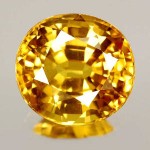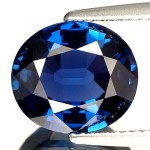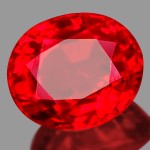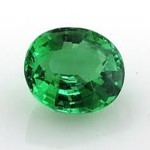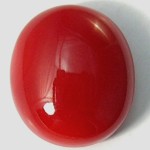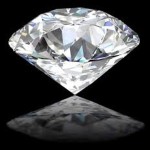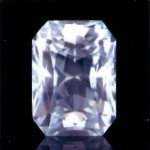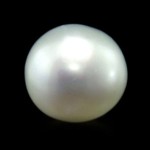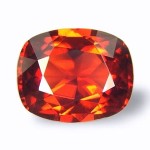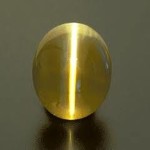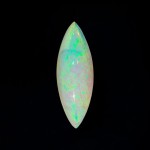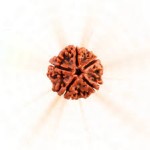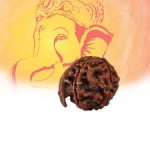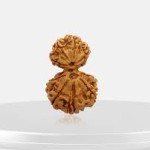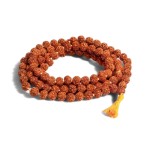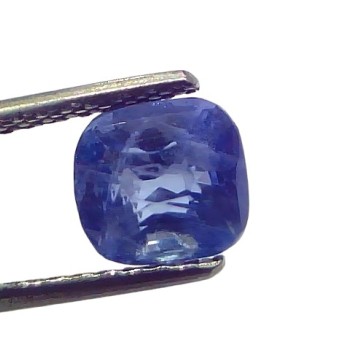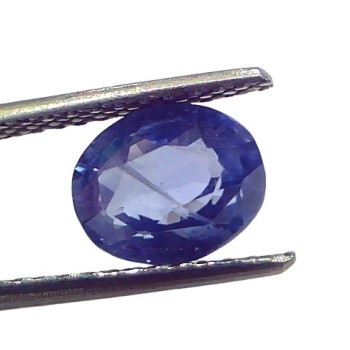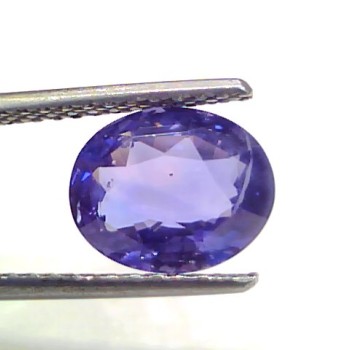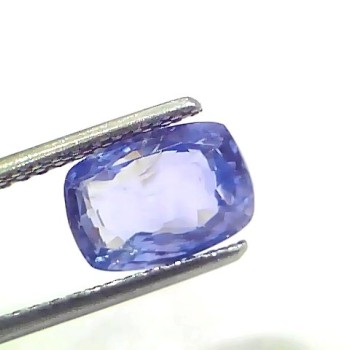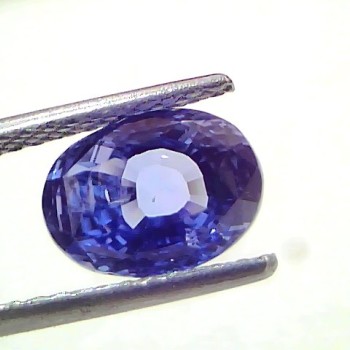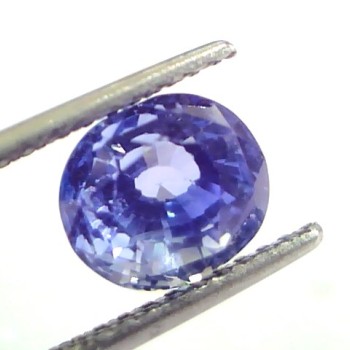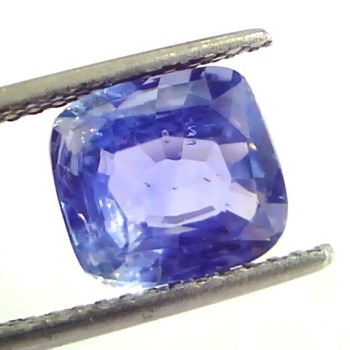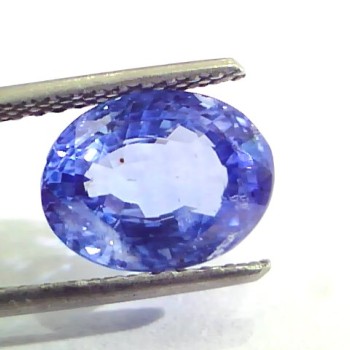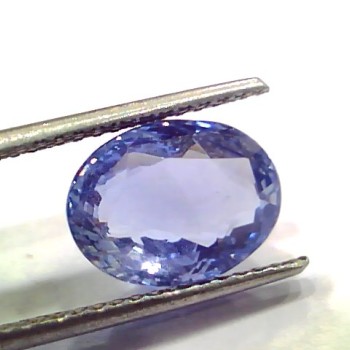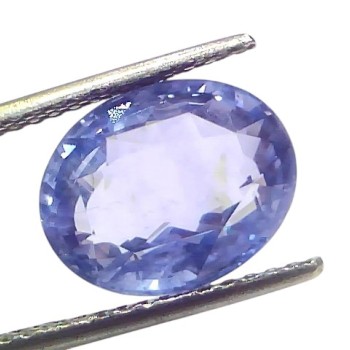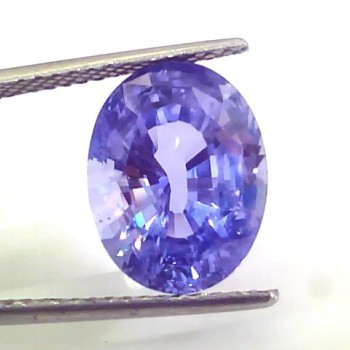Kashmir sapphire is a highly valued and sought-after variety of sapphire that is known for its rich, velvety blue color and exceptional clarity. It is named after the region of Kashmir, India, where it was first discovered in the late 1800s.
Kashmir sapphire is prized for its unique color, which is often described as a deep, velvety blue with a slight violet undertone. This color is caused by the presence of iron and titanium in the gemstone, as well as tiny inclusions of rutile that scatter light and give the stone a soft, velvety appearance.
In addition to its distinctive color, Kashmir sapphire is also highly valued for its exceptional clarity, which is rare for sapphires. This clarity is due to the gemstone's formation in a relatively low-temperature environment, which allowed for slow crystal growth and the formation of fewer inclusions.
Today, Kashmir sapphire is considered one of the most desirable and valuable varieties of sapphire, with prices often exceeding those of other high-quality sapphires. However, due to its rarity and limited availability, Kashmir sapphire is extremely difficult to find and is highly prized by collectors and gemstone enthusiasts alike.
Kashmir sapphire is a type of corundum, which is a mineral made up of aluminum oxide. It has a chemical formula of Al2O3 and a hardness of 9 on the Mohs scale, making it one of the hardest gemstones.
Kashmir sapphire is known for its rich, velvety blue color, which is caused by the presence of trace elements such as iron and titanium. It can also have a slight violet undertone, which is highly prized.
In terms of clarity, Kashmir sapphire is known for its exceptional transparency and lack of inclusions, which is rare for sapphires. This is due to the gemstone's formation in a relatively low-temperature environment, which allowed for slow crystal growth and the formation of fewer inclusions.
Kashmir sapphires are typically found in small sizes, with most gemstones weighing less than 5 carats. Larger stones are very rare and highly valued.
Overall, Kashmir sapphire is considered one of the most valuable and sought-after varieties of sapphire due to its unique color, exceptional clarity, and rarity.
The price of Kashmir sapphire can vary greatly depending on a variety of factors, such as its color, clarity, carat weight, and overall quality. Kashmir sapphires are very rare and highly valued, and as such, can command very high prices.
In general, Kashmir sapphires that exhibit a rich, velvety blue color and exceptional clarity can fetch prices ranging from tens of thousands to hundreds of thousands of dollars per carat. For example, in 2019, a 15.99-carat Kashmir sapphire sold at auction for $3.5 million, or over $218,000 per carat.
It is important to note that the rarity and value of Kashmir sapphire means that there are many synthetic or treated stones on the market that are sold as natural Kashmir sapphires. It is essential to purchase gemstones from reputable dealers who can provide documentation and certification of the stone's origin and authenticity.
Here are some frequently asked questions about Kashmir sapphire:
What is Kashmir sapphire?
Kashmir sapphire is a rare and highly prized variety of sapphire that comes from the Kashmir region in northern India. It is known for its rich, velvety blue color and exceptional clarity.
What makes Kashmir sapphire so valuable?
Kashmir sapphire is valued for its unique color and exceptional clarity, as well as its rarity. The Kashmir region has only produced a limited amount of high-quality sapphire, making it highly sought-after by collectors and investors.
How is Kashmir sapphire formed?
Kashmir sapphire is formed under specific geological conditions that occur only in the Kashmir region. The sapphires are formed in metamorphic rocks that were once sedimentary rocks, and they are believed to have been subjected to intense heat and pressure over millions of years.
What is the typical size of Kashmir sapphire?
Kashmir sapphires are typically found in small sizes, with most gemstones weighing less than 5 carats. Larger stones are very rare and highly valued.
How can I tell if a Kashmir sapphire is genuine?
It can be challenging to determine if a Kashmir sapphire is genuine, as there are many synthetic or treated stones on the market. The best way to ensure that a Kashmir sapphire is authentic is to purchase it from a reputable dealer who can provide documentation and certification of the stone's origin and authenticity.
Are there any treatments used on Kashmir sapphire?
Kashmir sapphire is typically not treated, as it is valued for its natural color and exceptional clarity. However, some lower-quality stones may be heat-treated to improve their color or clarity.
Can Kashmir sapphire be used in jewelry?
Yes, Kashmir sapphire is a popular choice for use in jewelry, particularly in high-end pieces such as engagement rings, necklaces, and earrings.

